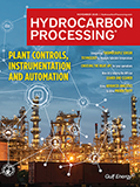Safety
Nextchem awarded engineering/technology services contract from SATORP (Saudi Arabia)
MAIRE announced that NEXTCHEM (Sustainable Technology Solutions), through its subsidiary NextChem Tech, has been awarded a three-year contract by SATORP – a JV between Saudi Aramco and TotalEnergies – to provide engineering and technology services related to the sulfur recovery complex of SATORP’s refinery in Jubail, Kingdom of Saudi Arabia.
Fire put out at oil refinery in Baku (Azerbaijan)
A fire at a 130,000-bpd oil refinery in Azerbaijan's capital Baku was extinguished on Wednesday, emergency cervices said.
Russia says fire at Ufa oil refinery extinguished, was caused by technical issue
A fire that broke out on Monday at the Ufimsky oil refinery, one of Russia's largest, was due to technical issues and has been extinguished, Russia's emergency ministry said, adding that the refinery had continued operations.
Pertamina says fire at central Java refinery complex extinguished, output not affected
Indonesia's state energy firm Pertamina said a fire that broke out at its Cilacap refinery complex on Thursday has been extinguished and the refinery's operation is not affected.
Improve reliability with predictive maintenance insights
Machine-learning-equipped advanced analytics platforms empower SMEs to solve some of the toughest process problems efficiently, implement effective process improvements, transition from reactive to predictive maintenance strategies, increase productivity and uptime, and operate more profitably.
Gas turbine maintenance and inspection model enhancement
Improving asset performance is a major concern throughout industry and is associated with maintenance costs, experience, machine/equipment age, and operational and environmental conditions. This article will focus on improving the reliability and availability of a plant gas turbine by applying best maintenance practices, operational enhancements and performance monitoring. Moreover, an inclusive maintenance and inspection model is proposed compared with the current common model.
Online Exclusive: Innovations in hydrocarbon processing technologies and lifecycle solutions
Hydrocarbon Processing (HP) interviewed Kevin Dunphy (KD), Vice President and General Manager at Emerson. The interview covered advancements in hydrocarbon processing technologies, such as innovations in Coriolis flow metering and radar level measurement. Kevin explained how these technologies, alongside Emerson's new non-intrusive flow measurement solutions, are improving safety and efficiency in the industry. He also explained how Emerson supports its customers with lifecycle solutions, ensuring long-term value beyond initial costs.
Russia's Ryazan oil refinery halts operations after drone strike
Russia's Ryazan oil refinery has suspended operations after an attack by Ukrainian drones on Monday.
Japan's Eneos shuts 141,000-bpd Sakai CDU after a fire
Japan's biggest refiner, Eneos Corp., shut down a 141,000- bpd crude distillation unit (CDU) at its Sakai refinery on February 17 after a fire there that day.
Russia's Syzran oil refinery suspends operations following drone attack
Syzran oil refinery, operated by Russia's oil giant Rosneft, suspended oil processing on Wednesday due to a fire at the primary unit (CDU-6) following an attack by a Ukrainian drone.

- ITT to acquire SPX Flow for > $4.77 B, expanding leadership in highly engineered components and adjacent flow technologies 12/5
- MOL Group introduces eco-friendly Bag-in-Box packaging for lubricants 12/5
- Addis Energy secures $8.3 MM to scale its transformative approach to low-cost ammonia production 12/5
- World Fuel Services supplies cruise line with waste-based biofuels 12/5
- Chevron announces $18 B-$19-B CAPEX budget for 2026 12/5
- Russia and India sign deal to build urea plant in Russia 12/5




